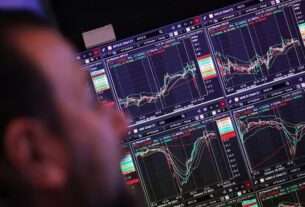The Modi government rolled out an ambitious One Nation, One Tax for India in July 2017. GST for Goods and Services Tax aimed to replace multiple taxation systems and thus bring a fundamental transformation in the Indian taxation regime. It further promised to reduce the price of goods and services for ordinary citizens.However, the current trends about GST point out results in another direction. There is also a GST invoice which can turnout to be a proof.
Here is why there is a need to rethink or demystify the current trends about GST
The first and foremost problem with GST that has been around the world is the fall in the collection of GST taxes. When GST was introduced, the central government proposed that they will compensate any losses suffered by the states from the Compensation cess. The Central government collects funds for compensation cess from taxation of specific luxurious items cigarettes, aerated water, automobiles, and coal. However, with the government unable to collect taxes from these products as well it has failed to pay to states for a long time. As per the reports, the state has not received funds since December 2019.
Further, as GST was introduced, it was assumed that GST would raise the share of indirect taxes in the gross domestic product. However, things have not worked that way. Both state and centre have failed in their share of the collection of taxes. As per the reports of The Comptroller and Auditor General, the actual central deficit is more than two percentage points higher than officially stated.
Another problem with Goods and Services Tax is that there is a gap in payment of taxes by the poor and rich. As the GST rates are revenue neutral, the poor end up paying more than the rich. The GST slab rate of 28% of specific products is actually an extreme step.
Further, Petroleum products, tobacco, liquor etc. have been kept outside the purview of GST, and thus there is an exemption of GST on these products. However, before the coming of GST, these products accounted for the bulk of excise revenue, and with GST, the collection of funds have further dropped.
Finally, it was seen that at the time of general elections, the Modi government lowered the cost of goods. It resulted in dropping down the tax rate on many consumer goods. It was thus observed that the input tax credit claimed by the taxpayers exceeded the GST they paid on the final produce. To overcome this loophole, it was decided that there would be matching of invoices
Goods and Services Tax has not performed poorly in its principles, but there has been a failure in the implementation of tax as well. For instance, at the time of demonetisation people found creative ways to give a boom to the fake bill industry. They conveniently produced counterfeit bills to escape the GST net.
Conclusion: With the poor implementation of GST and complexities in filing GST for the small businessmen, the collection in GST has significantly dropped. The lockdown has further lowered this tax collection. Thus, the thoughts about increasing the GST rates of some products have been around the corner for some time. Some other ideas that have been popping are to review the GST rates of luxurious products which are the basis of the collection of funds for compensation cess. With the centre failing to provide compensation funds, it will likely borrow funds from the market. These critical decisions related to GST would be taken in some time as the GST council meets again after the recent meeting a few days back.




